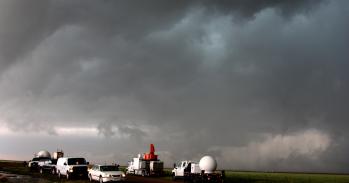
A new way of predicting which people may become friends on social networks - based on the type of places they visit - has been formulated by University of Cambridge researchers.
A new way of predicting which people may become friends on social networks - based on the type of places they visit - has been formulated by University of Cambridge researchers.
It turns out that the properties of the places we interact can determine how likely we are to develop social ties.
Salvatore Scellato
To date, most social networking sites like Facebook and LinkedIn have relied upon the ‘friend-of-a-friend’ approach to try and determine which people may have connections with one another.
However, Salvatore Scellato, Anastasios Noulas and Cecilia Mascolo, of Cambridge’s Computer Laboratory, have devised a new approach that not only looks at friends of friends, but also the places people visit – with incremental weightings given to different places such as airports and gymnasiums.
Scellato said: “Essentially this is a way in which we can predict how people will make new friends. We know that we are likely to become friends with ‘friends of friends’, but what we find is there are specific places which foster the creation of new friendships and that they have specific characteristics.”
Historically, the problem facing social networks has been the sheer volume of users. While millions of users may represent good news from a business perspective, it means the task of recommending friends can become an exponentially difficult one, if, as in the case of Facebook, you have 750 million active users.
The standard two-hop approach – sharing at least a common friend – has, to date, ignored the possibilities of recommending new friends based on the places where users ‘check-in’.
The trio’s research is an extension of long-standing sociological theory that people who tend to frequent the same places may be similarly-minded individuals likely to form a connection with one another – but applied to social networking sites.
Added Scellato: “For our research we analysed the location-based social network Gowalla to see how users created social connections over a period of four months. We discovered that about 30 per cent of all new social links appear among users that check-in to the same places. Thus, these ‘place friends’ represent disconnected users becoming direct connections.
“By combining place friends with friends-of-friends, we can make the prediction space about 15 times smaller and yet, cover 66 per cent of new social ties.
“It turns out that the properties of the places we interact can determine how likely we are to develop social ties. Offices, gyms and schools are more likely to aid development rather than other places such as football stadiums or airports. In those places, it’s highly unlikely people will develop a social connection.
“Our results show it’s possible to improve the performance of link prediction systems on location-based services that can be employed to keep the users of social networks interested and engaged with that particular website.”
This work is licensed under a Creative Commons Licence. If you use this content on your site please link back to this page.





